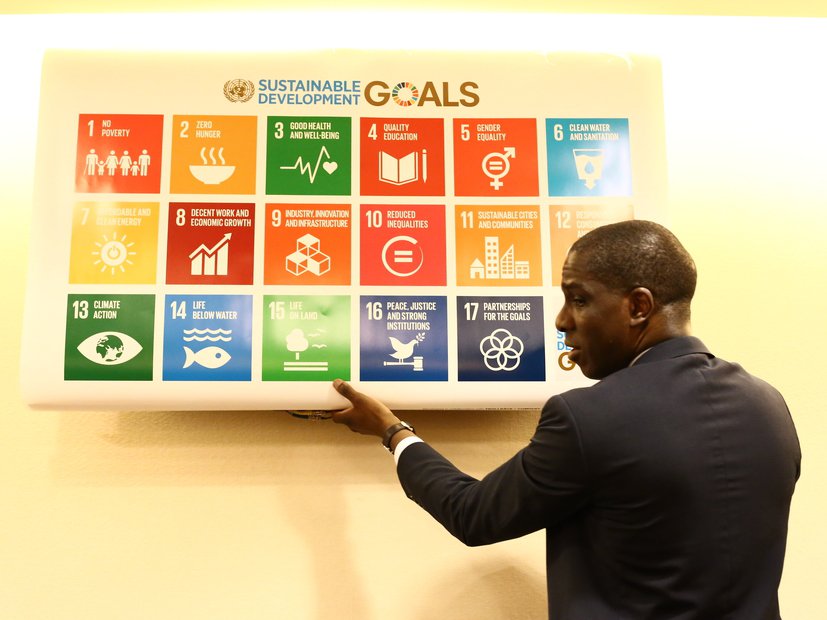Next week, heads of government will meet at the SDG Summit in New York to take stock of progress and discuss what more they can do to meet their commitment under the Sustainable Development Goals (SDGs) to ‘leave no one behind’.
This is an important platform for exploring where decisions and interactions across the Goals and targets can contribute to achieving the 2030 Agenda for Sustainable Development, and where they could hinder or even reverse the gains already made.
Without more explicit attention to these interactions, there is a risk that synergies will be missed and trade-offs will be exacerbated. Here are three tips for policy-makers to sharpen the focus on synergies and trade-offs in decision-making across the board on the SDGs.
1. Situate policy choices on a spectrum of synergies and trade-offs
Policy-makers can start by situating choices on a spectrum to identify where synergies clearly outweigh trade-offs. Where trade-offs outweigh synergies, they should take immediate, corrective action to mitigate these effects.
In my latest research with ODI’s Distinguished Fellow, Ambassador David Donoghue, I tested this method on a range of country examples, including Ethiopia’s experience of implementing the Productive Safety Net Programme (PSNP) and Viet Nam’s coal-powered energy policy. Here’s what I found.
In Ethiopia, the main synergies from the design and implementation of the PSNP cut across the poverty, health, income-generating and climate SDGs (SDGs 1, 3, 8 and 13), and stemmed from its focus on reducing chronic hunger, addressing climate-related shocks such as drought and increasing its range to include projects on nutrition and livelihoods.
By 2018, the PSNP had lifted 1.4 million people out of extreme poverty, a figure that’s expected to hit 5 million by 2020. It was also pivotal in responding to the worst drought in 40 years in 2015.
In Viet Nam, some of the main synergies emerged from rural electrification, and cut across the poverty, energy and growth SDGs (SDGs 1, 7 and 8). However, policy-makers have ignored trade-offs in terms of environmental sustainability and human health. While 97% of the population were provided with access to electricity between 1990 and 2010, over the same period the country’s per capita carbon emissions went up five-fold.
Coal-fired power plants are equipped with outdated, inefficient and polluting technologies. By 2030, they’ll generate more than half of the country’s total electricity – but by then Viet Nam will also have the highest premature mortality rate from coal pollution among South-East Asian countries.
These examples show that a simple, straightforward exercise to map decisions onto a spectrum of synergies and trade-offs can help catch poor choices early in the SDG implementation period, rather than lock a country into an unsustainable development path.
2. Strike a balance between short- and long-term needs, and across the economic, social and environmental dimensions of sustainable development
It is clear that policy-makers need to strike several major balances on SDG implementation: for instance, between domestic and international policy pressures, which may be perceived to be in conflict; or between short-term needs, often driven by political or electoral considerations, and longer-term considerations like inter-generational equity.
Another challenge – explicit in the 2030 Agenda – is finding the right balance between the three dimensions of sustainable development: economic, social and environmental. While some of the judgements required are straightforward, for example where positive synergies and potential gains are immediately apparent, others are difficult, with a range of costs and benefits that will need to be carefully weighed.
Analytical instruments like Poverty and Social Impact Analysis (PSIA) can make it easier for policy-makers to assess the social costs and benefits from proposed policy changes, and should become common practice within government. Ghana used the PSIA when it increased petroleum prices under its 2005 Energy Subsidy Reform programme. Poorer groups – according to the PSIA – were going to lose out. The findings helped the government identify areas where losses to the poor could be mitigated and where they could also benefit, for instance through investments in rural electrification and access to schools, healthcare and transport.
Equally, a dedicated standing mechanism at the heart of government can help ensure that issues around synergies and trade-offs receive collective and systematic attention at Cabinet level, and that the best possible guidance is provided for the political decisions that must be made on them.
3. Create incentives in national budgets to exploit synergies across the SDGs
Some Member States – as indicated in their Voluntary National Reviews – have decided to link SDG implementation closely to their budget planning processes. As part of their annual bids for budgetary allocations, ministries in these governments are asked to indicate how their proposed actions will help achieve the Goals. Such initiatives are welcome but may not go far enough to exploit synergies.
Creating incentives in budgets by explicitly reserving a certain portion of government spending for activities that take advantage of synergies across several SDGs and targets will encourage policy-makers to make these synergies more prominent in their proposals.
While leaders reflect in coming days on their experiences implementing the SDGs, looking for synergies and trade-offs across the Goals and targets and shifting decisions is a collective effort, and one that needs to be front and centre in discussions at the Summit.

